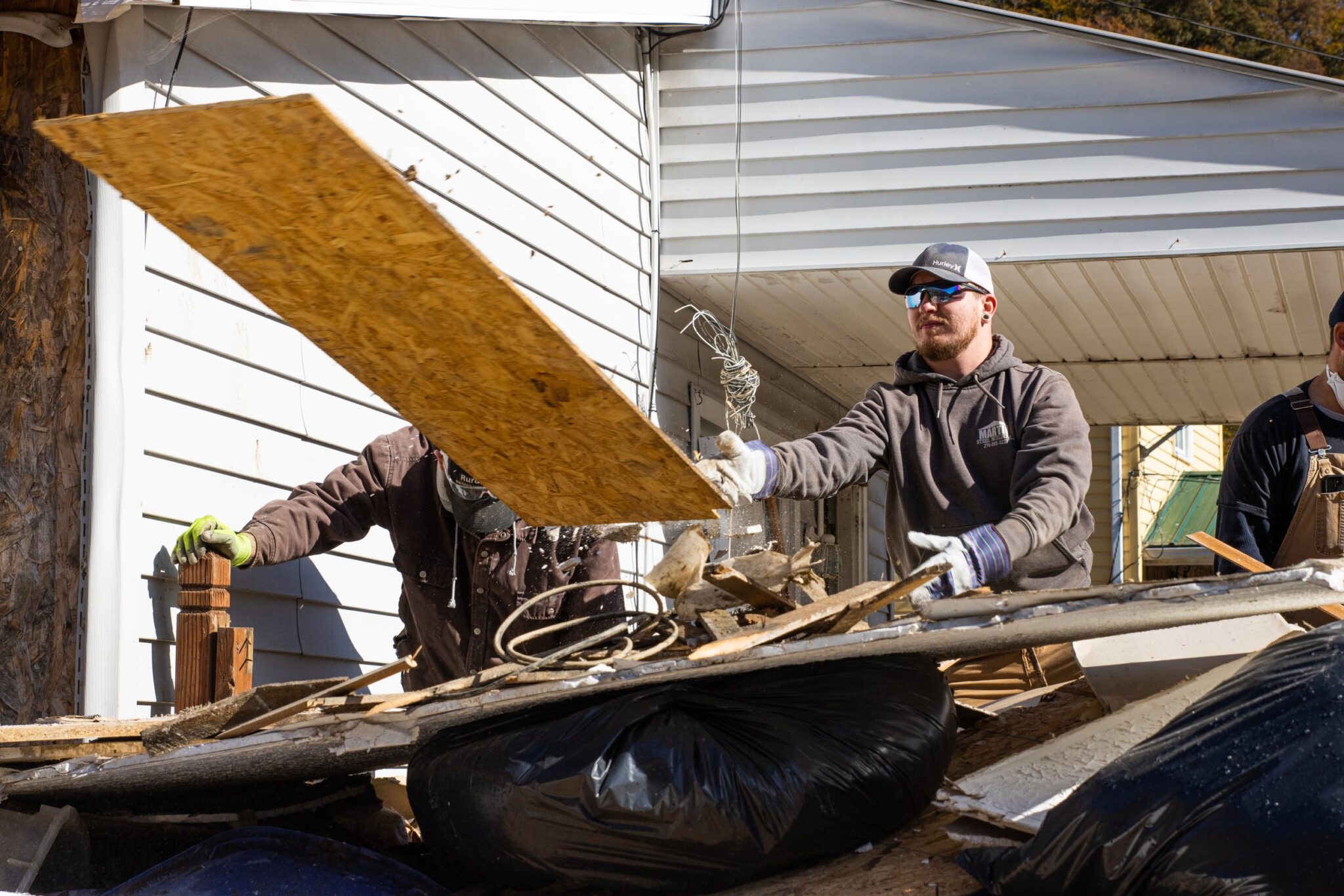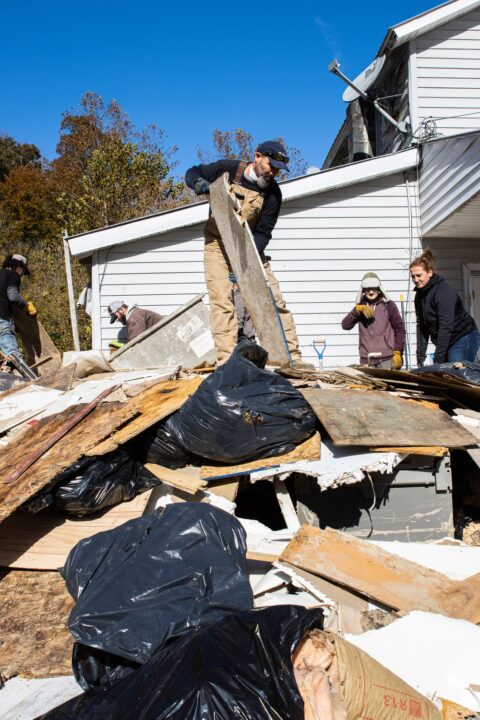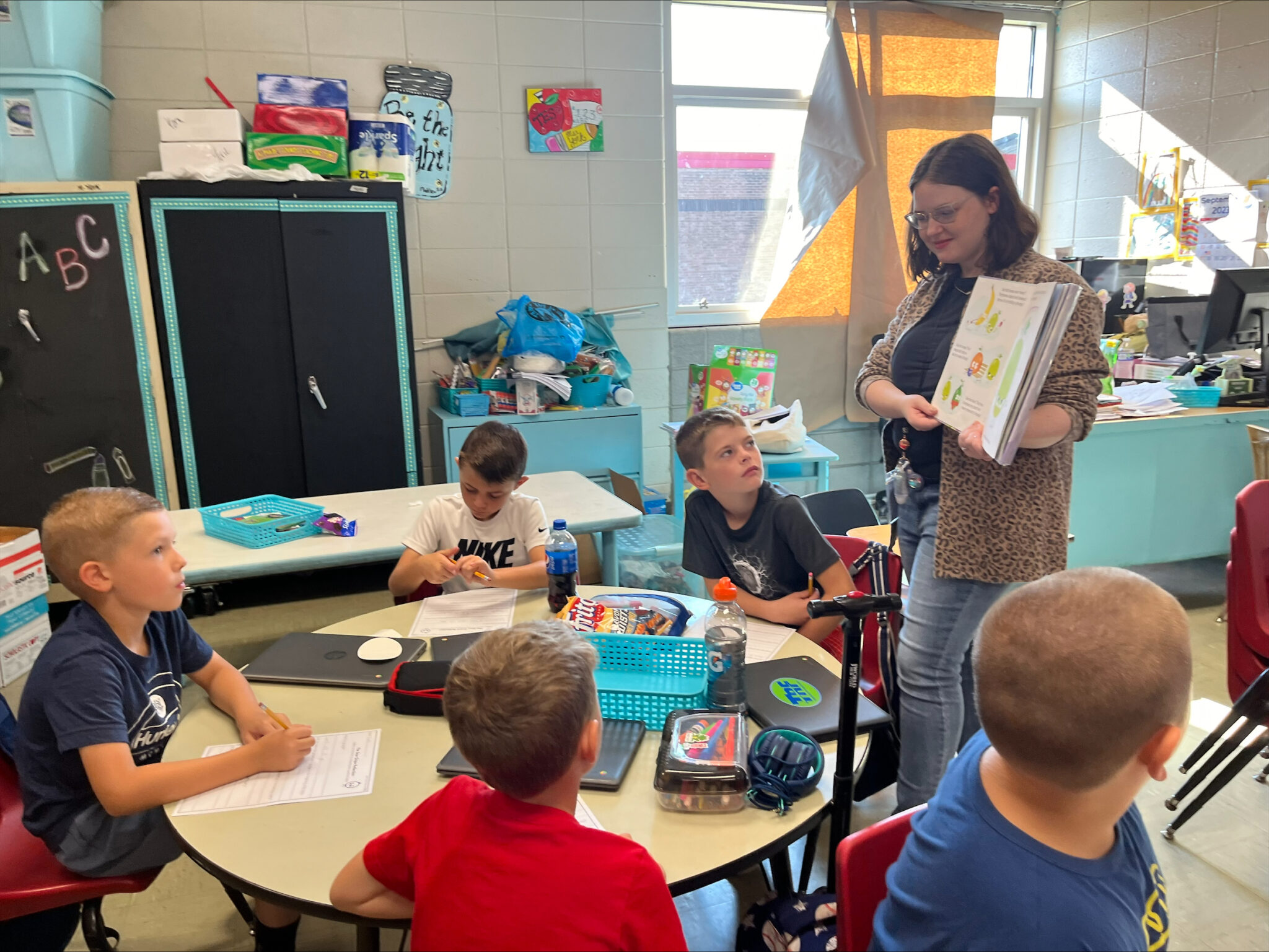A PLACE-BASED APPROACH TO FLOOD RELIEF
In the early morning hours of July 28, 2022, our people awoke to water rising in their homes. Families — parents, children, and grandparents climbed to rooftops clutching a family pet or a precious item they managed to save. Some waded in deep murky waters or even swam in places where the water was more than neck high.
Many describe those moments as the longest, most terrifying night of their lives, with over 1,700 homes affected and more than 600 unlivable. One school was decimated. Forty bodies were found including four children.
Partnership in Action
Individual organizations within the Appalachian Cradle-to-Career Partnership were tightly focused on their roles in emergency relief and recovery – for example, Fahe began the work of mucking out homes and getting people under roof as quickly as possible, our workforce partner EKCEP was immediately helping those who had lost their jobs because the place where they worked had been washed away, Save the Children deployed those within their organization that were skilled and experienced in recovery efforts and began to support prepared food efforts and clothing stations, Brushy Fork Leadership Institute began immediate support for those organizations who could provide childcare and trauma counseling for youth so that parents could feel confident their children were being cared properly while they were doing the cleanup work to get the family under roof, and PRI and the AppEd Service Agency focused on helping schools become operational as quickly as possible as the school year was about to begin.

Photo by Cris Ritchie
There were so many examples of outpouring of help one to another, that I couldn’t possibly capture it all here. Every piece of the C2C pipeline was negatively affected and, in most instances, outcome-driven programs were at a stand-still.
The AppC2C’s fear was that years of forward momentum would be reversed. So, we doubled down, committing to holding our pieces of the pipeline, “All Appalachian Students Succeed,” even while working in the aftermath of the flood.
The AppC2C Partnership quickly identified its role in researching how we could make our people and our place more resilient during future disasters and change disaster funding policies.
The Foundation for Appalachian Kentucky, with the support of AppC2C partner Brushy Fork Leadership Institute, convened and surveyed people from the most flood-impacted areas. As community listening sessions were activated, those most affected by the devastating flood became actively engaged in recovery planning and had a voice in the funding allocations to rebuild their communities.
The Path Forward: Community Comes First
The AppC2C leveraged its collective strength in convening organizations, agencies, government, and other non-profits. Our collective knowledge and research revealed that disaster funds could be used for more than building back what had washed away.
We then drew on the experience of other communities that, during times of disaster like Hurricanes Harvey, Sandy, and Katrina, had in the aftermath used disaster funds to create stronger economies, making their people more resilient, and addressing barriers to economic success. We wanted something transformational, and we weren’t the only ones. After a meeting with FEMA and HUD representatives, the AppC2C solidified its role as one of continuous communication with all our partners.

“FEMA wants a transformational plan; HUD wants a transformational plan. It will be all those (agencies and government structures) in between where the breakdowns occur, and it will be up to people like to you keep it moving.”
Chuck Heltsley
DHS/FEMA Interagency Recovery
Coordination
Federal Disaster Recovery Officer
The AppC2C Partnership recognizes the value of collective impact, with multiple entities working together towards a shared outcome. We also recognize the importance of place-based work and the agency of a community, especially in times of disaster.
The communities of Eastern Kentucky showed incredible strength, resilience, and determination in the aftermath of last summer’s floods. While larger outside organizations bring valuable resources, knowledge, and expertise in disaster recovery, our communities and local organizations, agencies, schools, governments, and businesses are the driving force behind rebuilding and charting a new path forward. Together, we collaborate to create resilient and thriving communities.
This is why the Appalachian Cradle-to-Career Partnership stands steadfast within and alongside the impacted communities, working together to rebuild, restore, and renew.
Contributing writers: Sandi Curd, Kentucky Highlands Investment Promise Zone Coordinator and Rural Partners Network Convener; Donna Daniels, Executive Director, Brushy Fork Leadership Institute; and Melissa Newman, Assoc. VP Place-Based Partnerships, Sustaining & Thriving, Partners for Rural Impact


